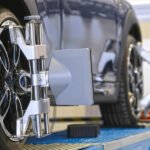

Will Hydrogen Cars Succeed over EVs ?
The automotive industry is at a crossroads, with electric vehicles (EVs) and hydrogen fuel cell vehicles (FCEVs) vying for dominance in the race to a sustainable future. While EVs have undoubtedly taken the lead, hydrogen cars, once relegated to fringe science fiction, are making a compelling case for their own place on the road.
A Brief History of Hydrogen Cars
The concept of hydrogen-powered vehicles dates back to the 1830s, but it wasn’t until the 1960s that fuel cell technology became viable. Early prototypes like the Chrysler TE-3 and General Motors Electrovan showcased the potential of hydrogen, but high costs and limited infrastructure hampered widespread adoption.
Modern Hydrogen Cars on the Horizon
Today, a handful of carmakers are pushing the boundaries of hydrogen technology. Toyota’s Mirai, for example, boasts a range of 647 kilometers (402 miles) on a single hydrogen tank, with refueling taking about five minutes – comparable to gasoline cars. Its sleek design and impressive performance figures (0-100 km/h in under 9 seconds) challenge the perception of hydrogen cars as clunky and slow.
Similarly, Hyundai’s Nexo SUV offers a spacious interior, a 666-kilometer (414-mile) range, and a host of advanced driver-assistance features. These are just two examples of the cutting-edge technology paving the way for a potential hydrogen revolution.
Market Adoption and Challenges
Despite these advancements, hydrogen cars face significant hurdles. The global FCEV market is still tiny, accounting for less than 0.1% of all car sales in 2022. Limited fueling infrastructure, with stations concentrated in select regions, remains a major barrier to entry. Additionally, the high cost of fuel cell technology keeps hydrogen cars significantly more expensive than their gasoline counterparts.
Under the Hood: How Hydrogen Engines Work
Unlike gasoline engines that burn fuel to generate power, hydrogen cars use fuel cells to convert hydrogen and oxygen into electricity. This electrochemical process produces only water vapor as a byproduct, making FCEVs emission-free at the tailpipe.
Here’s a breakdown of the process:
- Hydrogen Storage: Compressed hydrogen gas is stored in onboard tanks.
- Fuel Cell Stack: Hydrogen and oxygen enter the fuel cell stack, where a membrane separates the two gases.
- Electrochemical Reaction: Protons pass through the membrane, combining with electrons from the oxygen to create electricity and water vapor.
- Electric Motor: The electricity generated powers an electric motor that drives the wheels.
Performance and Handling
Hydrogen cars can match or even outperform gasoline counterparts in terms of acceleration and handling. Their electric motors deliver instant torque, resulting in quick off-the-line performance. Additionally, the placement of the fuel cell stack and battery pack can contribute to a lower center of gravity, improving handling and stability.
Advantages Over Gasoline Engines
- Zero Tailpipe Emissions: Unlike gasoline cars that emit harmful pollutants, hydrogen cars only produce water vapor, making them a cleaner alternative for both air quality and climate change.
- Faster Refueling: Filling a hydrogen tank takes about the same time as refueling a gasoline car, compared to the hours it can take to charge an EV.
- Longer Range: Some hydrogen cars offer comparable or even longer ranges than EVs, particularly when considering factors like cold weather, which can significantly impact EV range.
Advantages Over Electric Vehicles
- No Range Anxiety: With hydrogen cars, you don’t need to worry about running out of power and being stranded due to limited charging infrastructure.
- Faster Refueling: Refueling a hydrogen car takes significantly less time than charging an EV, especially for high-speed DC chargers.
- Potentially Lower Environmental Impact: While both EVs and FCEVs produce zero tailpipe emissions, the source of electricity for EVs can be a concern if generated from fossil fuels. Hydrogen, on the other hand, can be produced from renewable sources like solar and wind power.
Running and Maintenance Costs
The cost of running and maintaining a hydrogen car is currently higher than that of a gasoline car. However, the gap is narrowing with advancements in technology and the potential for economies of scale as the market grows. Additionally, government incentives and subsidies can help offset the initial cost of purchasing a hydrogen car.
Concluding Remarks: A Two-Horse Race?
The future of transportation is likely to be a mix of technologies, with both EVs and FCEVs playing significant roles. While EVs currently hold the lead due to their lower upfront cost and established infrastructure, hydrogen cars offer compelling advantages in terms of range, refueling speed, and potential environmental impact. Ultimately, the success of both technologies will depend on continued advancements in efficiency and cost reduction.
Add a comment Cancel reply
Categories
- Car Gadgets (17)
- Car News (33)
- Car Reviews (43)
- Car Wars (7)
- Mechanicals (32)
- Uncategorized (2)
Recent Posts
About us

Popular Tags
Related posts


The New Car Smell: What you need to Know

The Drawbacks of Stretched Sedans: Cruising in Comfort or Compromising Convenience?








